- The Cosmic Tug-of-War: When Science and Religion Attend the Same Dinner Party
- The Scientist-Priest and the Expanding Universe:
- The Dalai Lama Loves Quantum Physics:
- The Vatican Observatory:
- The Curious Case of Islamic Algebra:
- The Godelian Shock to Materialism:
- Conclusion: The Divine Dance of Dichotomies:
The Cosmic Tug-of-War: When Science and Religion Attend the Same Dinner Party
When Heaven and Science RSVP: The Dinner Party of the Millennium
Picture a grand, ornate dining hall, perhaps something straight out of a medieval castle or an ancient monastery. Candlelight bounces off golden goblets, and there’s a murmur of anticipation in the air. Awaiting their places at the table are the most unexpected mix of guests history has ever seen.
In one corner, Sir Isaac Newton, the father of physics, is engrossed in a chat about the very nature of gravity—no, not his groundbreaking discovery, but rather how it might relate to the karmic pull of our deeds, a conversation spurred by none other than the Dalai Lama. One can almost hear Newton musing, “An apple falls from a tree, not unlike how our actions fall upon the fabric of the universe?” The Dalai Lama, with a mischievous twinkle in his eye, might reply, “Ah, but Sir Isaac, who plants the tree?”
Across the hall, Galileo Galilei, the revolutionary astronomer who bravely championed the heliocentric model, is uncorking a vintage bottle of wine. And to whom does he offer the first glass? A Sufi mystic, Rumi perhaps, who might whisper something about wine being a metaphor for divine love, making Galileo ponder if the orbits of planets are not unlike the whirls of passionate dervishes.
As the evening unfolds, the room is alive with a blend of scientific theories and profound spirituality. There are heated debates, harmonious agreements, and everything in between. Theoretical equations intertwine with parables, and ancient chants resonate with the rhythm of empirical data.
And as we, the fortunate and flabbergasted onlookers, navigate this cerebral soirée, we find ourselves at the cusp of reason and revelation. What at first seems like a gathering of opposites morphs into a celebration of exploration—both of the universe and the soul.
So, here we are, caught between the allure of the stars and the mysteries of the spirit, witnessing a meeting of minds and souls. Ready to embark on a journey where logic meets lore, and where inquiries about the cosmos and the Creator coalesce? Fasten your spiritual seatbelt, grab your telescope, and let’s dive deep into the wonders of this unparalleled confluence.
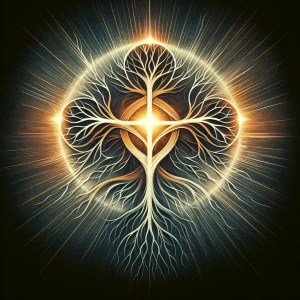
The Scientist-Priest and the Expanding Universe:
The Cosmic Clergyman: Lemaître’s Leap Between the Pulpit and the Stars
Picture this: It’s the Roaring Twenties. Flappers, jazz, and the Charleston dance dominate the cultural scene. Yet amidst all the glitz and glamour, in the hallowed halls of academia, strides in a man whose mind is not on the dance floor but out amidst the stars. Meet Georges Lemaître—the man who wore the dual hats of a Roman Catholic priest and a groundbreaking astronomer. And trust us, juggling sermons with stargazing was no easy feat.
Lemaître wasn’t your typical priest. When he wasn’t pondering over the metaphysical and the divine, he was engrossed in equations and astral theories. And in the 1920s, this priestly physicist made a proclamation that ruffled the feathers of the scientific community: the universe, he claimed, was expanding. It was a concept so radical, so audacious, that many of his peers raised their eyebrows in skepticism. “A growing universe? Bless the man’s soul, but that’s utter heresy!” they might’ve scoffed.
But Lemaître wasn’t done. Expanding upon his earlier proposition, he introduced the idea of the “primeval atom” or the “cosmic egg.” Today, we know it as the precursor to the Big Bang theory—a cataclysmic explosion that supposedly gave birth to our universe. When Lemaître first proposed this theory, it was so outlandish, so contrary to existing beliefs that even the great Albert Einstein had a few choice words. “Your math is correct,” Einstein remarked, possibly with a wry smile, “but your physics is abominable!” Ouch! Talk about divine disapproval!
Yet, as the years rolled on, the wheels of science turned in Lemaître’s favor. Edwin Hubble, with his observations, gave credence to the priest’s revolutionary ideas. The universe was indeed expanding, just as Lemaître had suggested.
The tale of Georges Lemaître serves as a delightful reminder that sometimes, the realms of the sacred and the scientific not only intersect but enrich one another. Here was a man who, in his pursuit of understanding the cosmos, never abandoned his spiritual roots. Instead, he showed the world that, occasionally, faith and formulae can walk hand in hand, and the dance they perform together is nothing short of cosmic brilliance. So, the next time you glance up at the starry expanse, remember the priest who looked beyond dogmas and doctrines and saw the universe in all its expanding glory. A true testament that when the cassock meets the calculator, magic happens.
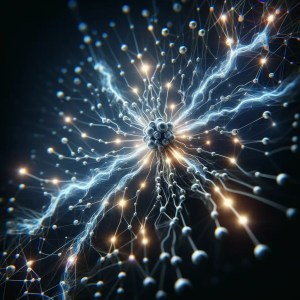
The Dalai Lama Loves Quantum Physics:
The Quantum Monk: When the Dalai Lama Ponders Particles and Prayers
Imagine stepping into a monastery in the heart of the Himalayas. The cold air is scented with incense, and the sound of monks chanting resonates through the hallowed halls. Amidst them sits a maroon-robed figure, deep in meditation. But wait a second, is that a book on quantum physics next to him? Welcome to the world of the 14th Dalai Lama, where spirituality and science sit side by side in perfect harmony.
The Dalai Lama, despite his traditional religious upbringing, has a voracious appetite for science. While some might find solace in scriptures, His Holiness dives deep into the world of quarks, quantum fields, and Schroedinger’s infamous cat. What draws a global spiritual leader to the enigmatic realm of quantum physics, you ask? It turns out that the universe’s microscopic realm resonates surprisingly well with ancient Buddhist teachings.
Buddhism, at its core, speaks of interdependence and the emptiness of inherent existence. Everything, according to Buddhist philosophy, is interconnected, and nothing exists in isolation. Enter quantum physics, which posits eerily similar ideas: particles that are seemingly separate and distinct can be entangled, affecting each other instantaneously across vast distances. The Dalai Lama sees this not as a contradiction but as a confluence of his beliefs with modern science.
But it’s not just about finding parallels. The Dalai Lama’s love for science is underpinned by his commitment to truth and understanding. In a bold move for a religious leader, he once stated that if scientific findings were to ever contradict a Buddhist belief, Buddhism would have to evolve. That’s right, while many religious figures might see science as a threat, the Dalai Lama welcomes it as a tool for refinement and growth.
So, picture the Dalai Lama in deep contemplation. While one hand might be turning prayer beads, the other could very well be flipping pages of a quantum mechanics textbook. Here’s a monk who doesn’t just recite mantras but also revels in the mysteries of the macrocosm and microcosm alike.
In a world that often posits science and religion as adversaries, the Dalai Lama stands as a beacon of possibility, showing that the two can coexist, learn from each other, and perhaps, in the dance between faith and fact, discover the ultimate truth. So, the next time you think of meditation, imagine the interplay of particles and waves in the vast expanse of the universe. After all, if the Dalai Lama can do it, why can’t we? Talk about spiritual science!
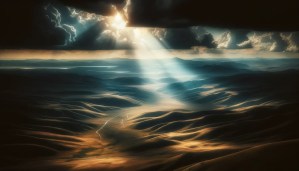
The Vatican Observatory:
The Vatican’s Stargazers: Seeking Answers Beyond The Heavens
In the picturesque Italian town of Castel Gandolfo, nestled atop a hill and overlooking a serene lake, lies an unexpected gem of scientific exploration: the Vatican Observatory. With its lush surroundings and historic ambiance, it’s the last place you’d expect to house state-of-the-art telescopes and cosmological research apparatus. But don’t let the old-world charm fool you; this institution is as forward-thinking as they come.
The Vatican Observatory is one of the world’s oldest active astronomical observatories and stands as a testament to the Church’s commitment to the marriage of faith and reason. Now, if you’re imagining a group of monks squinting through rudimentary telescopes, trying to catch a glimpse of cherubic figures flitting through the stars, you’d be sorely mistaken. The reality is far more intriguing.
In these hallowed halls, Catholic astronomers, donning not just clerical collars but also lab coats, delve into the intricacies of our universe. Their research topics are as vast as the cosmos itself: from understanding the spiraling arms of distant galaxies to dissecting the subtleties of quantum mechanics. And if you think their sole aim is to identify signs of the Biblical apocalypse, think again. These astronomers are on a quest for knowledge, aiming to unravel the mysteries of the universe, much like their secular counterparts.
But why, you might wonder, is the Church investing time and resources into something seemingly so removed from religious teachings? It’s simple: to them, studying the universe is akin to understanding the mind of God. As the famous Jesuit scientist and director of the Vatican Observatory, Brother Guy Consolmagno, once said, “God is revealed in His handiwork.”
It’s also worth noting that the Church’s relationship with astronomy has had its… let’s call them ‘starry-eyed’ moments. One cannot forget the infamous trial of Galileo, where the pioneering scientist found himself at odds with the Vatican over his support for the heliocentric model of the solar system. But time, as they say, heals all, and the Church eventually admitted its misstep, officially exonerating Galileo in 1992.
Today, the Vatican’s approach to science is collaborative, not confrontational. The Observatory even hosts summer schools for young astronomers and frequently collaborates with global institutions, reflecting a cosmopolitan spirit.
In the end, Castel Gandolfo’s Vatican Observatory reminds us that the quest for knowledge, whether spiritual or scientific, is universal. As the stars shine down on its ancient walls, they illuminate a story of reconciliation, exploration, and the enduring human desire to understand the great beyond. So, the next time you find yourself gazing up at the night sky, remember you might just be sharing a moment with a Vatican astronomer, both of you pondering the same cosmic wonders. How’s that for divine connection?
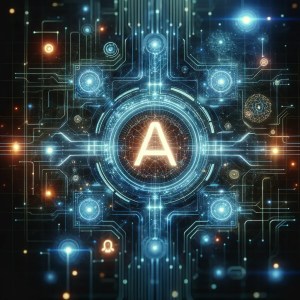
The Curious Case of Islamic Algebra:
Algebra and the Golden Age of Islam: Grappling with ‘x’ and ‘y’
The word ‘algebra’ might evoke a slew of mixed emotions from many: fascination, admiration, and for some, perhaps a touch of academic trauma. However, beyond the scribbles of chalk on a blackboard and the occasional frustrated eraser smudge, lies a rich history deeply rooted in the Islamic Golden Age. Hold on to your quadratic equations; we’re about to embark on a mathematical journey through time!
It’s the 9th century, and the Islamic empire is experiencing a dazzling renaissance. Scholars, thinkers, and innovators from across the realms are congregating in cities like Baghdad, bringing with them a thirst for knowledge and a penchant for scholarly debates. Among them was a certain polymath named Muhammad ibn Musa al-Khwarizmi.
Al-Khwarizmi, recognized today as the “father of algebra,” penned the groundbreaking work “Al-Kitab al-Mukhtasar fi Hisab al-Jabr wal-Muqabala.” That’s quite the mouthful, but if we break it down, “al-Jabr” means “restoration,” which is where the term ‘algebra’ originates. This seminal text laid down the foundational principles of algebraic equations, which eventually found their way to European scholars, revolutionizing mathematics and its applications forever.
Now, here’s the million-dirham question: Without the flourishing intellectual environment fostered by the Islamic empire, would algebra have emerged as we know it? The interplay of faith, scholarship, and innovation during the Islamic Golden Age wasn’t just incidental. Religion, particularly Islam, placed immense value on seeking knowledge. The Prophet Muhammad is even quoted as saying, “Seeking knowledge is an obligation upon every Muslim.”
In the vast mosaic of Islamic advancements, algebra was just one tile. From astronomy to medicine, scholars of the era drew inspiration from their faith to push the boundaries of human understanding. Their pioneering spirit was fueled by a synergy of religious reverence and an unyielding curiosity about the natural world.
So, as modern-day students scribble down algebraic formulas and wrestle with abstract concepts, little do they know they’re partaking in a legacy that spans centuries and cultures. And while it’s tempting to wish that Al-Khwarizmi had kept his revelations to himself during those particularly tough exam days, we can’t help but tip our hats (or perhaps, turbans) to the genius of the Islamic Golden Age. Thanks to them, ‘x’ and ‘y’ found their place in classrooms worldwide, ensuring that the spirit of exploration and inquiry continues to challenge and inspire.
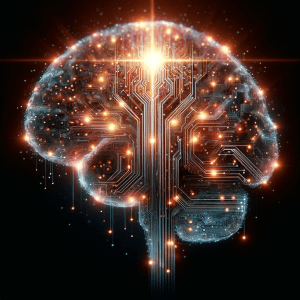
The Godelian Shock to Materialism:
Gödel’s Incompleteness Theorems: When Math Nods to Mysticism
Kurt Gödel’s name might not be as familiar as Einstein’s, but in the esoteric halls of mathematical philosophy, he’s nothing short of a rockstar. Sporting thick glasses and an even thicker air of mystery, Gödel dropped a logic bomb in the 20th century that left mathematicians and philosophers alike scratching their heads and re-evaluating their life choices.
So, what exactly did Gödel uncover? His incompleteness theorems, at their core, are about the inherent limitations within mathematical systems. To simplify an incredibly intricate concept: if you have a set of mathematical rules, there will always be truthful statements that can’t be proven using just those rules. It’s like having a puzzle where certain pieces, no matter how you twist or turn them, won’t fit, even though they belong to the picture.
For many, this was a sobering realization. Math, long heralded as the epitome of order and reason, suddenly seemed a touch… incomplete. But while mathematicians were busy grappling with existential dread, philosophers and theologians saw an opening.
If even mathematics, the language of the universe, had its boundaries, couldn’t the same be said for human cognition and understanding? Perhaps there are truths about our world, or even truths about the divine, that simply surpass our intellectual grasp.
The theologians, in particular, felt a mix of vindication and excitement. They mused: if even our most rigorous logical systems have their gaps, might those gaps be filled with the mysteries of a higher power? Could Gödel’s revelations be an inadvertent testament to the vastness of the unknown, and possibly, the unknowable?
It’s a tantalizing thought, though, of course, Gödel himself never made such claims about his theorems. But his work certainly catalyzed a dialogue between two worlds often seen as opposing: science and faith.
In the end, Gödel’s theorems serve as a humbling reminder of the limitations of human inquiry. Whether one interprets the incompleteness as an ode to the enigmatic nature of the divine or simply as a quirky quirk of logic, one thing’s for sure: the universe, in all its mathematical and mystical glory, remains delightfully, and at times frustratingly, elusive.
Conclusion: The Divine Dance of Dichotomies:
The Cosmic Choreography of Science and Religion
History’s annals are replete with tales of clash and camaraderie between science and religion. These two behemoths of human thought, often cast as adversaries, have shared more stages than one would initially suspect. Their journey, rather than a straight path, resembles the intricate steps of a celestial salsa dance. At times, they’ve harmoniously twirled together; at others, they’ve stepped on each other’s metaphorical toes.
Consider the brilliant minds of the past. Lemaître reconciled his faith with groundbreaking astronomical theories. The Dalai Lama found resonances between Buddhism and the perplexing world of quantum mechanics. And let’s not forget the vast contributions from the Islamic Golden Age, laying down mathematical foundations that continue to shape our academic curriculums. These luminaries and epochs remind us that at the intersection of science and faith lies a thriving marketplace of ideas, as bustling and diverse as a cosmopolitan city square.
Yet, the overlap between science and religion isn’t just a relic of bygone eras. Today’s frontiers of neuroscience, cosmology, and even artificial intelligence often brush up against age-old existential and ethical questions. These disciplines, cutting-edge as they may be, find themselves revisiting philosophical quandaries that theologians, mystics, and sages have pondered for millennia.
So, what’s next for our dynamic duo? As we stand on the precipice of new discoveries and spiritual reckonings, the confluence of science and faith seems more relevant than ever. Together, they beckon us towards a richer tapestry of understanding, one that melds empirical evidence with the profound depths of human experience.
In this cosmic dance, the melodies of logic and belief entwine, urging us to embrace both the known and the ineffable. And as we stride forward on this shared odyssey, remember to keep your team eclectic: it’s always a good idea to have both the gravitational insights of Newton and the boundless compassion of the Dalai Lama guiding your way. After all, in the grand choreography of existence, every dancer and every step counts.
🔭 Join the Simply Sound Society Forum: A Community of Explorers and Dreamers! 🔭
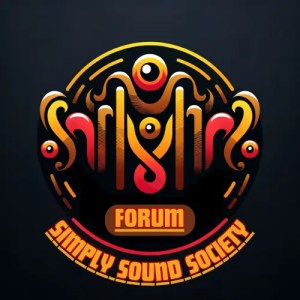
- 🌠 Embark on a Cosmic Odyssey with SimplySoundAdvice.com: Where Wonders Never Cease! 🌠
- Self-Discovery: Exploring Various Spiritual Practices
- The Most Credible UFO Sightings in History: Top 4
- Extraterrestrial Life: What Leading Scientists Believe
- Exploring the Science Behind Ghost Sightings
- The Mind-Bending World of Quantum Physics
- How Artificial Intelligence (AI) is Reshaping Our World
- The Evolution of Major World Religions
- The World’s Most Haunted Places: A Global Tour









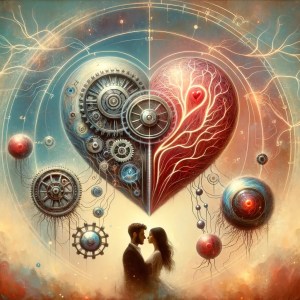
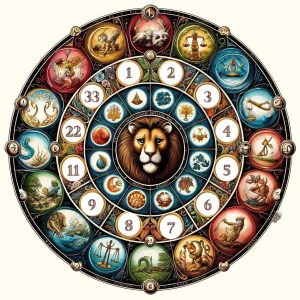
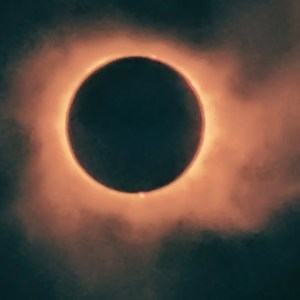

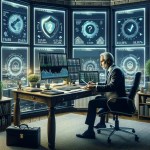


What i dont understood is in reality how youre now not really a lot more smartlyfavored than you might be now Youre very intelligent You understand therefore significantly in terms of this topic produced me personally believe it from a lot of numerous angles Its like women and men are not interested except it is one thing to accomplish with Woman gaga Your own stuffs outstanding Always care for it up